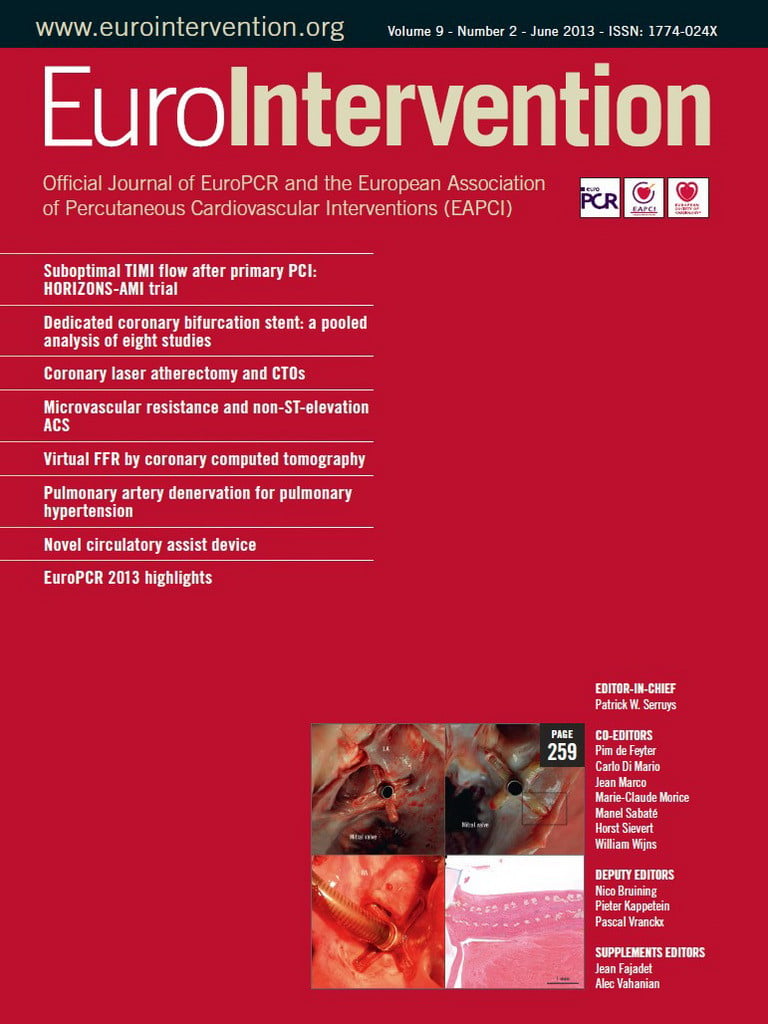Although cost-effectiveness is no longer my cup of tea, I have been in the past quite interested in it and contributed to the literature with two major publications: one on balloon angioplasty vs. stents, and the other on CABG vs. PCI1,2. So it was with great pleasure that I read the remarkable editorial which follows in this edition of our journal written by Flavio Ribichini, David Taggart and Corrado Vassanelli3. These three clinicians are passionate physicians who voice their frustrations concerning societal denial in financially supporting a treatment that can save the lives of all elderly populations.
I back up 100% what is, in essence, an appeal and a call to action and give my support to every single word in their editorial…but they should not be too harsh on themselves since they are part of a ménage à trois. And who make up this trio? It is of course the industries that manufacture these devices, the societies who reimburse their costs and the physicians who want the very best available treatments for their patients. However, this ménage à trois implies only two parameters –the cost and the effectiveness.
In my previous encounters with cost-effectiveness experts, I always faced the same dilemma: in the past, these experts took for granted the price tag of the device and, using this sacrosanct principle, they would then try to explain to the clinician how they would need to select –within our society– the lucky few who could benefit from the treatment from a medical and a societal point of view. In the early pioneering days, a balloon for angioplasty could be purchased from the now defunct Schneider company for $5,000, the Palmaz-Schatz stent was initially offered to the BENESTENT investigator for $4,000 –today it would probably cost 60 €. Cordis introduced the Cypher, at least in the Netherlands, for 2,200 €. Currently, the two most frequently used percutaneous aortic valve replacements in Europe cost 20,000 €. I know that you will immediately tell me that Industry has to recover its research and development investment; this argument is well taken and is apparently a fact of life in a society like our own that recognises the price of a patented idea. These ideas, translated to a real product, are expensive. The day when percutaneous aortic valve replacements will cost 3,000 €, Flavio, David and Corrado’s editorial will fall apart.
But can we achieve that overnight in a society respectful of the financial value of a patent?
Certainly not, and yet I have seen percutaneous aortic valve replacements made in China that are copycats of the original and manufactured for a price of 2,000 €. It may seem that Chinese manufacturers do not abide by the international patent rules. However, as I previously stated in public, perhaps China, India, Africa and South America should develop their own technologies to take advantage of their low production costs.
So in writing this we open a new ethical debate on a worldwide scale with the following question:
In emerging countries which cannot afford a Western device, is it legitimate that they use an affordable product self-manufactured for their own populations?
We started with a ménage à trois trying to resolve a simple equation, an equation given more prominence by the fact that EuroPCR bestowed this year’s ETHICA award not upon a single individual, but upon the device industry as a whole. This was done in recognition of the inherent drive of this industry towards technological evolution and one of the key messages regarding this award is the measurement and demonstration of the economic and social benefits of interventions4. However, from this simple equation, we believe that, within a complex global context and despite an oversimplification of the issues raised in these editorials, it is food for thought.




